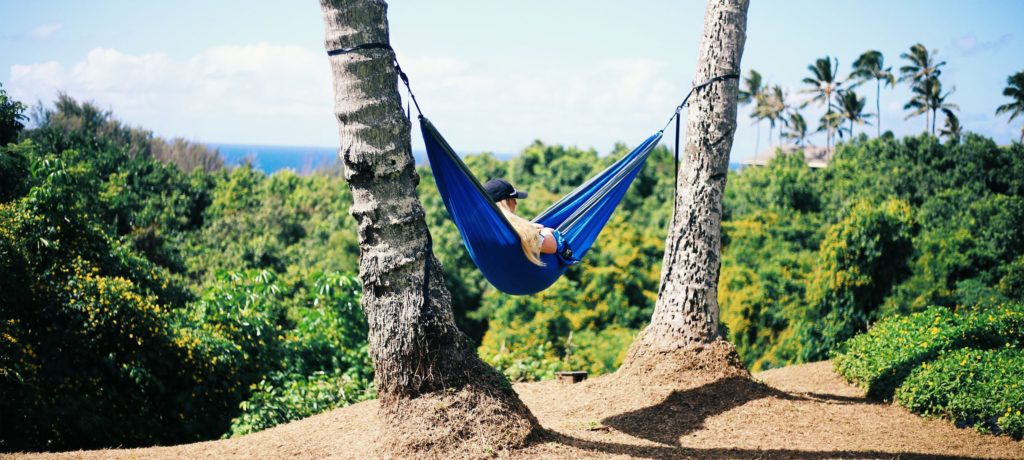How to: Hammock Responsibly
We love hammock camping and we want to make sure our parks and lands are protected from overuse and impact. In order to achieve this we need to hammock responsibly.

Do you hammock responsibly?
Answer these 5 questions to find out
Q: How far do you need to hang your hammock from a water source?
It is recommended you hang your hammock 200 ft from any water source. There are important plant and animal life that can be found surrounding water bodies and we do not want to disturb or upset their environment.
Q: What are the effects hammocks can have on the environment if not properly hung?
If hung properly hammocks have a very low impact on our environment. However, if hammocks are not properly hung they can cause damage to the tree bark. You can use specific “tree hugger” straps for the lowest impact to the tree.
Avoid hanging, nailing, or using plastic cording to attach anything to trees as this can cause additional damage.
Q: What are some hazards you could find on a hammock campsite?
On a hammock campsite you need to watch out for dead trees, and tree limbs. Make sure not to hang your hammock from dead trees as they are not secure and can fall and injure you or your fellow campers.
Check the area for animal habitat or insect nests, as well as poisonous plants. Be sure to only build fires if they are permitted. If possible, use an existing fire ring.

Q: What makes a good hammock campsite?
The best hammock campsites first allow hammocking! Check before you go to make sure that wherever your journeys bring you, they allow hammocking. Next, look for an already established campsite to avoid unnecessary impact. Look for trees with large trunks, and little undergrowth.
If you are camping with a large crowd try to split up and stay in smaller camp sites to reduce impact on one site.
Q: Why is it dangerous to leave your hammock unattended while not at your hammock site?
Leaving your hammock unattended can pose a risk to animals as well as small children. As they explore they may easily become tangled in the hammock.
Removing your hammock while you are not at camp also keeps it in great shape and prevents small animals or insects from damaging your hammock.
So hopefully you were able to answer these questions and learn a little more. We all can try and hammock responsibly. Do you have any tips or tricks on responsible hammocking? Leave us a comment below! Happy hanging!
